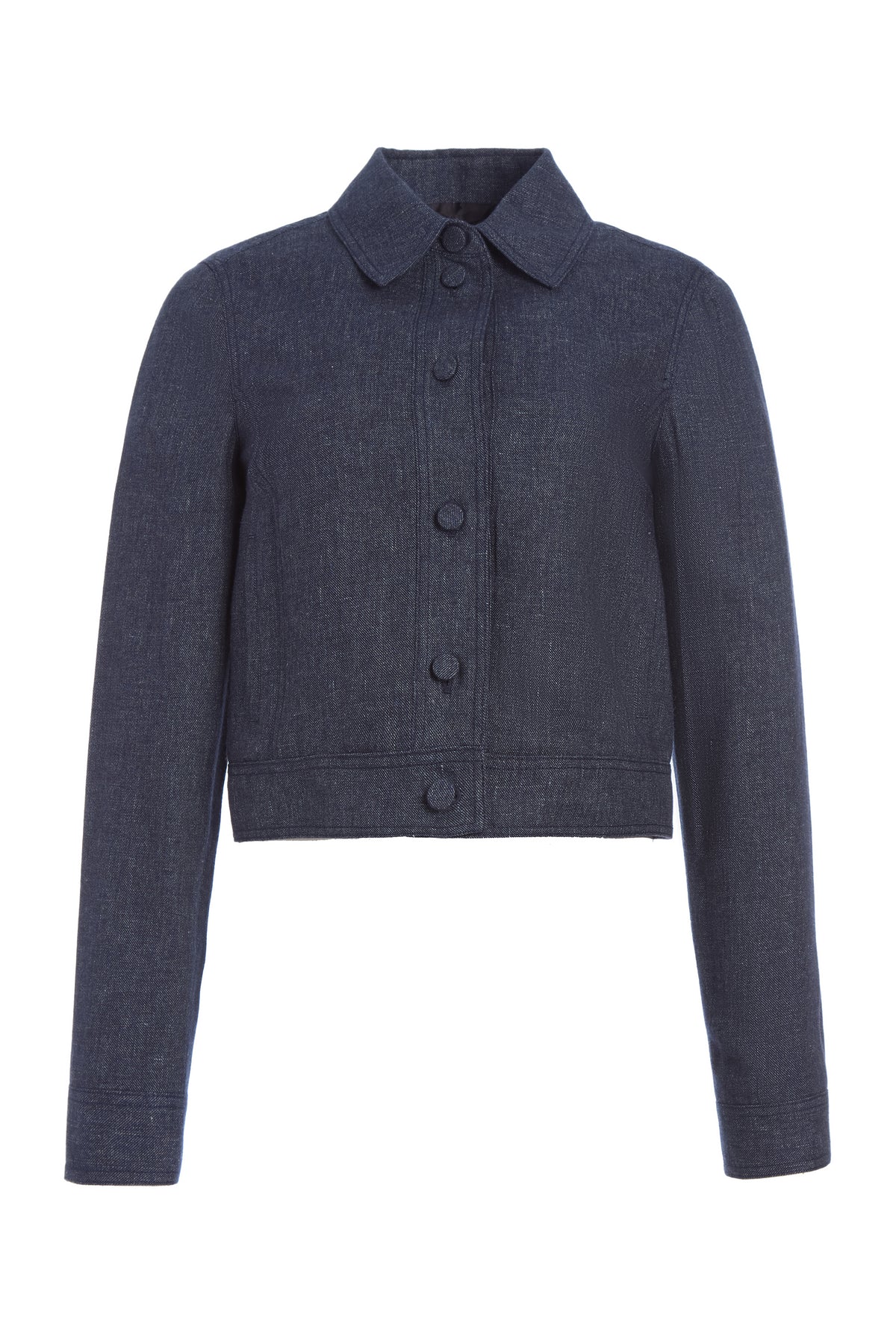
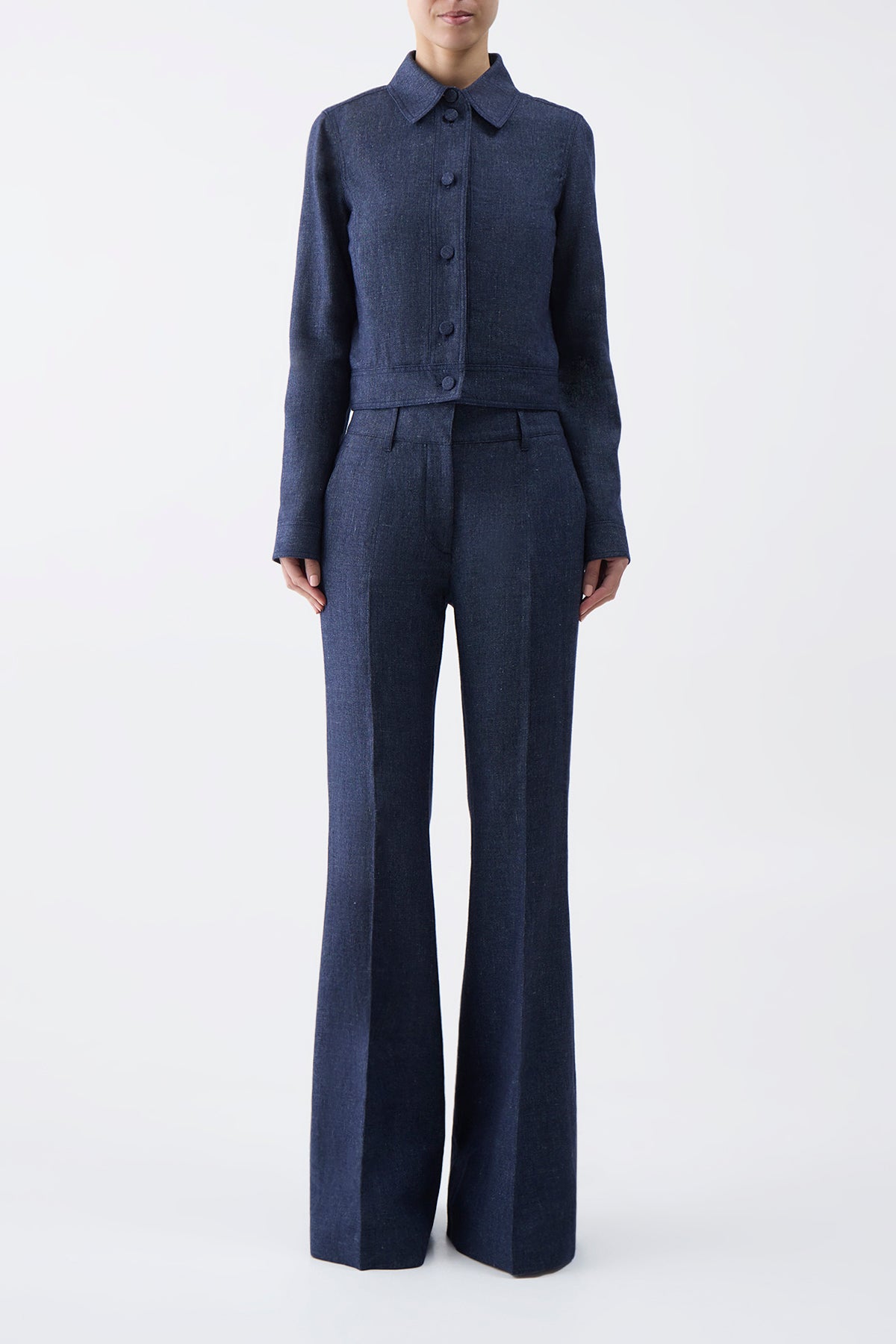
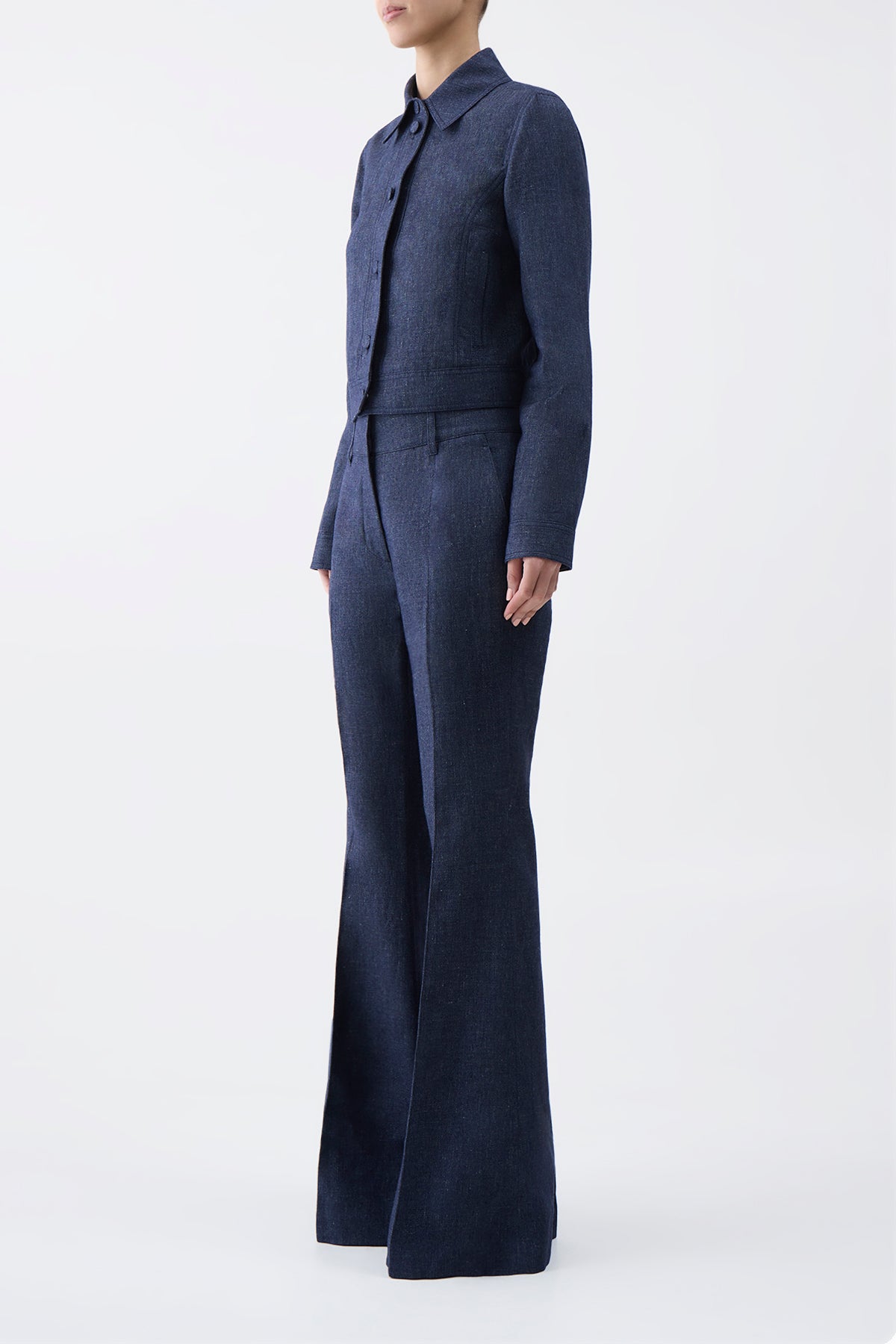
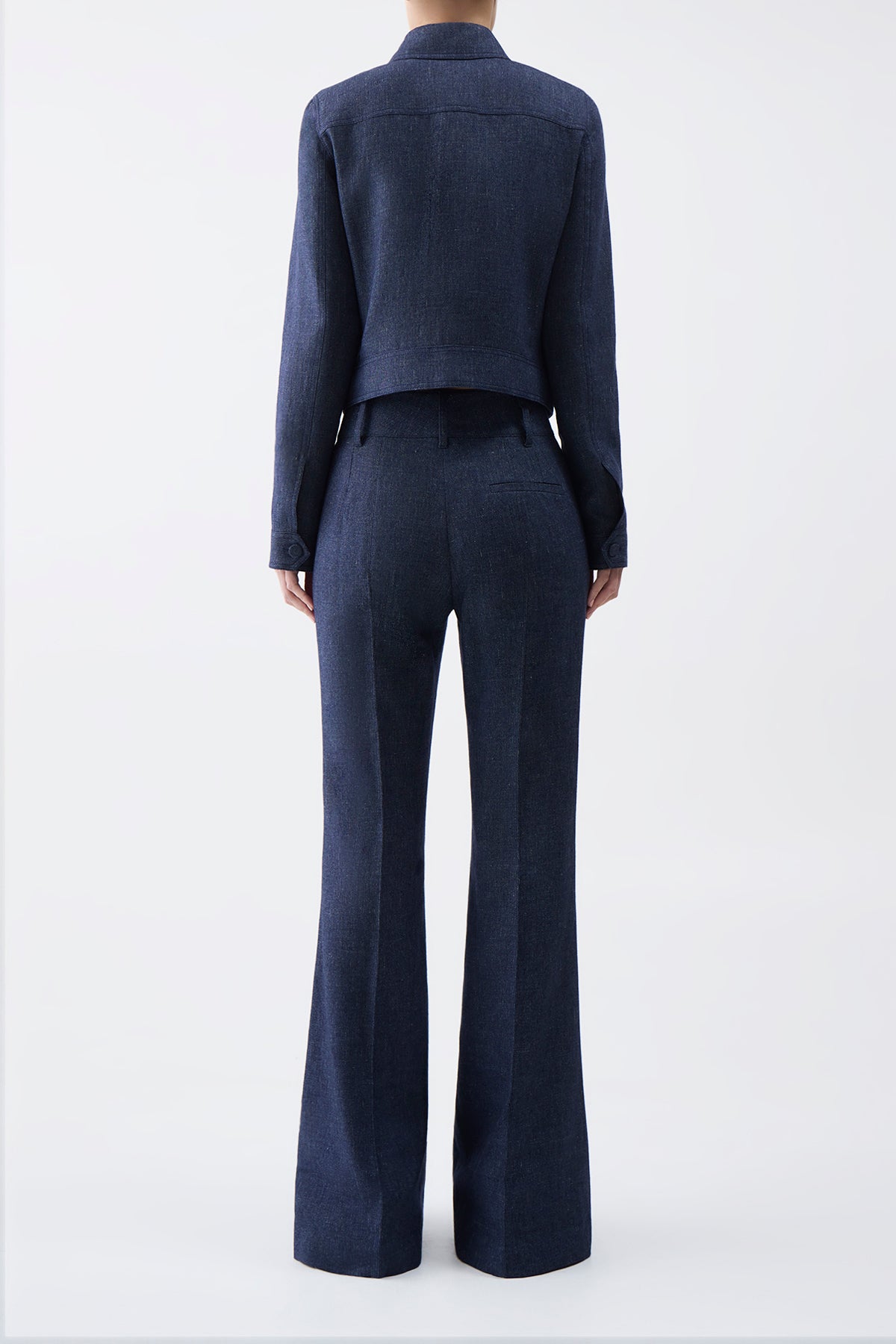
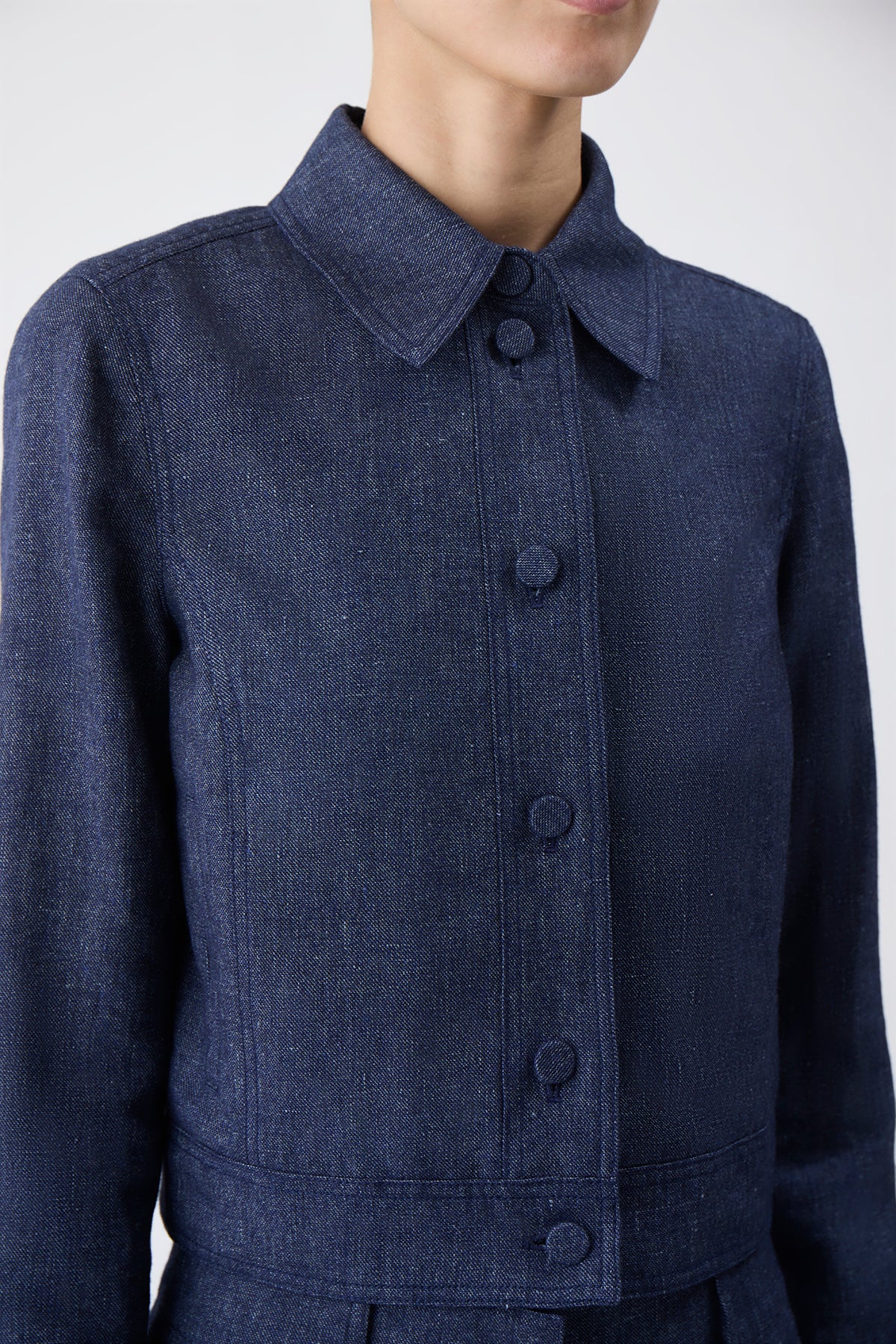
Material Supplier Transparency:
Thereza Jacket in Navy Linen Virgin Wool
The Thereza jacket is a cropped jacket style, complete with topstitching, collar and button-through front, in double face twill this style is impactful and succinct.
Details:
- 49% linen (Europe)
- 28% wool (Italy)
- 15% silk (Italy)
- 8% cashmere (Italy)
- Dying in Italy
- Weaving/finishing in China and Italy
Blended fibers take on properties of the joining counterparts to achieve uniquely desirable characteristics.
Linen is a natural fiber from the flax plant and is one of the oldest cultivated plant fibers. It has exceptional ability to keep skin cool in warm weather, due to its airflow, wicking, and crisp fibers that stand away from body. Twice as strong as cotton, it becomes softer over time, while maintaining its exceptional durability.
Wool is a renewable fiber; one sheep can produce 4-5 pounds of wool per year. Wool provides warmth by trapping heat, while simultaneously transporting moisture away from the body so skin stays dry and comfortable. It is naturally antimicrobial, so it resists odors and rarely needs washing. Its exceptional durability allows for long garment lifespan, and it can biodegrade when disposed into right soil conditions.
Silk is known for its luxurious drape, luster and ability to take rich color. It is the strongest natural fiber and has low density, creating light and comfortable fabric. Silk’s resilient elasticity maintains garment shape, and its smooth surface is resistant to attracting dirt. Silk keeps you cool in warm weather and provides insulating warmth in cool weather.
Cashmere is one of the most luxurious wools, with desirable drape, softness and wrinkle resistance. It is up to three times more insulating than regular wool, with lofty fibers that can be tightly knit into warm and lightweight fabric. Like all wool, it wicks moisture and allows skin to breathe. Cashmere is considered hypoallergenic, since it doesn’t have lanolin. While more delicate than other wool, cashmere garments will not lose their shape if properly cared for. This is due to the fiber’s natural stretch that allows garment to move with you and recover.
This family-owned mill installed solar panels in 2011, in effort to power its electricity needs. Additionally, they treat wastewater internally before recycling. They recently obtained certification by the Global Organic Textile Standard (GOTS), are working toward the Better Cotton Initiative (BCI) and are shifting to organic linen and hemp. They abide by the following compliances: Global Recycled Standard (GRS), Responsible Wool Standard (RWS), Zero Discharge of Hazardous Chemicals Manufactured Restricted Substances List (ZDHC MRSL), and Global Organic Textile Standard (GOTS).
This garment was made in a small tailoring factory located in Padova, Italy.
